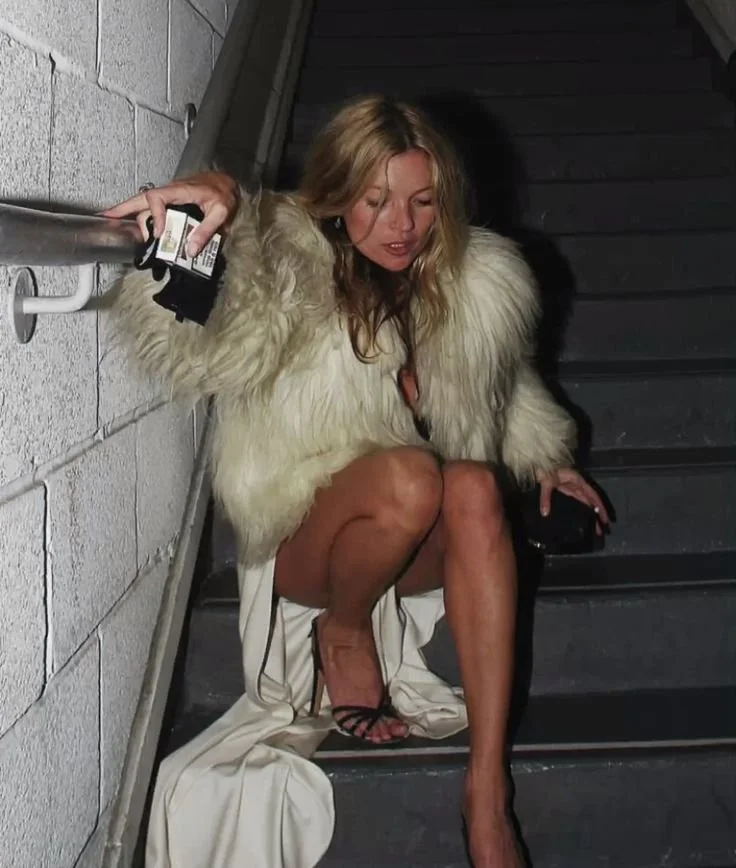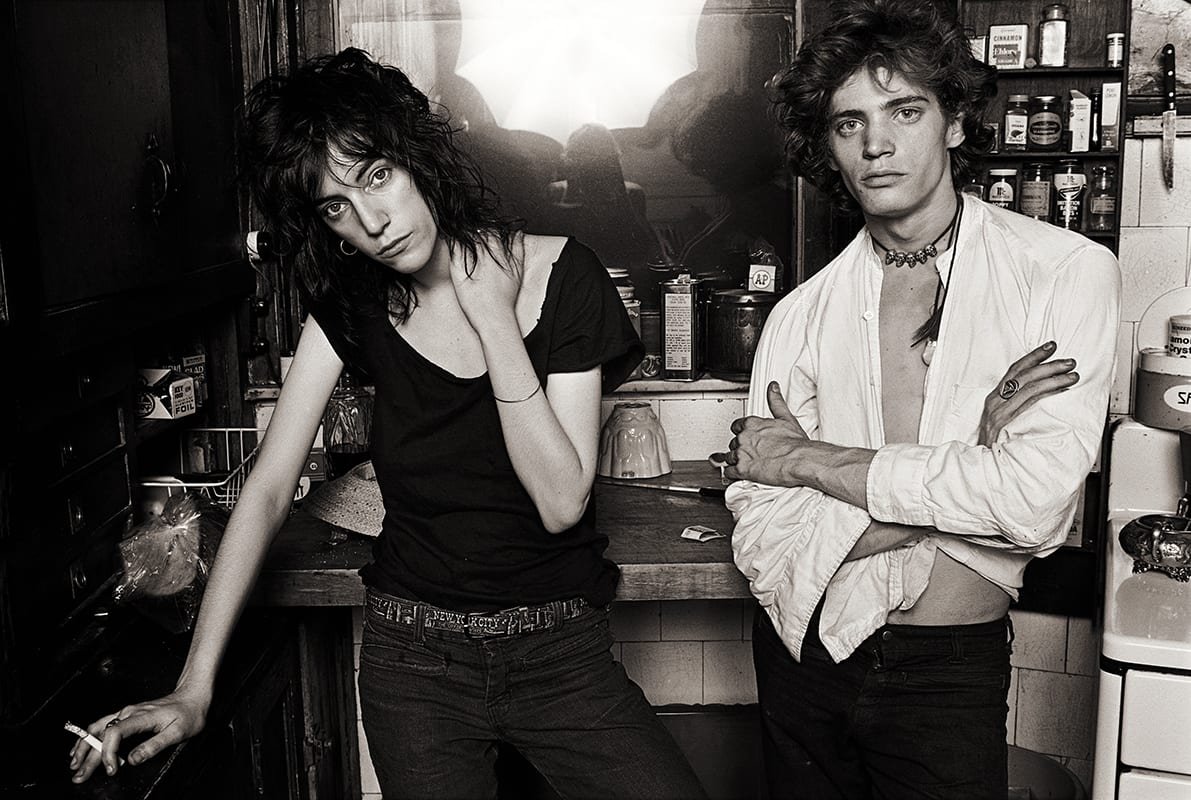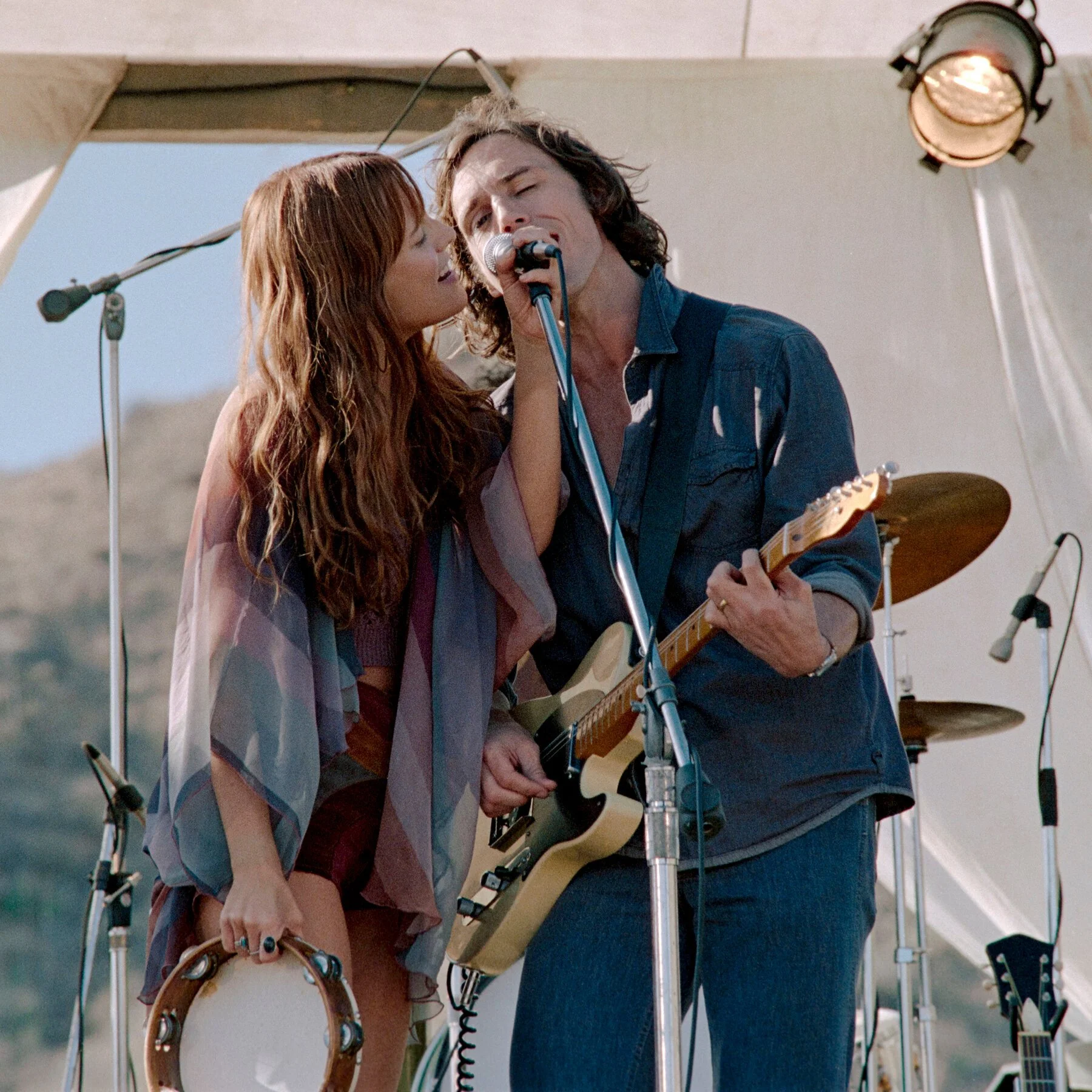THE RISE OF THE ROCKSTAR GIRLFRIEND
Black leather, red lace, and a smoky eye that can kill—the “Rockstar Girlfriend” aesthetic has swept the internet in recent years. A fantasy of tour buses and late nights, the fashion leans directly into the heart of musicianship.
Reminiscent of the beginnings of rock and roll, this style can be traced back long before the times of Pinterest and TikTok, being widely attributed to the early 90s and 2000s. Although the trend does have earlier ties to the late 60s and early 70s with the likes of Iman Mohamed Abdulmajid, it has been widely believed that popular women—such as Kate Moss, Courtney Love, and Pamela Anderson—helped to further this fashion in the eyes of modern media.
Kate Moss by GREG BRENNAN
Effortlessly combining grunge with soft elements of glitter and fur, this aesthetic has become sought after among certain subcultures of music like riot grrrl and indie sleaze.
Two women who have more directly lived the experience and are upheld as some of the most notable rockstar girlfriends are Alexa Chung and Patti Smith. Chung dated popular musician Alex Turner of the Arctic Monkeys in the early 2000s. She has been widely attributed as the inspiration for popular tracks on the album AM, released in 2013, consisting of their hits “Do I Wanna Know?” and “Why’d You Only Call Me When You’re High?”
She, however, has built a name of her own prior to this relationship and has continued to do so outside of it, including modelling for popular brands like Vivienne Westwood and Miu Miu. These accomplishments have only further cemented her impact in fashion and legitimized her association with the lifestyle.
The model would also go on to release her novel entitled It in 2013. The multimedia collection of writing, photography, and drawings acts as a window into her life, containing the details of being immersed in the world of music and fashion guides.
Patti Smith, on the other hand, is revered for her musical and literary contributions. Her memoir Just Kids (2010) is an homage to her time with photographer Robert Mapplethorpe in New York City, a time that shaped the pair's adolescence. Smith has made it clear that despite not remaining together, the memoir was written with a lot of love and intention, as she wanted to make the final product “the quality of what he deserved.”
Smith and Mapplethorpe by NORMAN SEEFF
The “Rockstar Girlfriend” aesthetic bridges fiction and reality, drawing inspiration from both and influencing them. For example, the novel-turned-TV series Daisy Jones & The Six showcases a fictional rockstar, Daisy Jones, who embodies passion and stage presence while navigating a romantic relationship with one of her bandmates. This dynamic reflects real-life parallels, such as Stevie Nicks and Lindsey Buckingham of Fleetwood Mac, who helped shape the aesthetic’s foundation.
Daisy Jones commands the attention of the crowd and is also in a relationship with her bandmate. Both are able to coexist on an equal playing field of talent and attention, working together to create something magical for listeners, but never diminishing the other. While it is a fictional story, the story reflects the real-world dynamics within the music industry.
Riley Keough and Sam Claflin as Daisy Jones and Billy Duune by LACEY TERRELL/PRIME VIDEO
Despite bridging reality and fiction, this trend has faced criticism. Detractors argue that it reduces women to their relationships with male musicians, perpetuating the idea of living in someone else’s shadow. Writer Sophie Lou Wilson highlighted this perspective in her article “The rockstar girlfriend aesthetic is 2022’s latest problematic trend,” stating, “The male gaze is so pervasive that it seeps into how women see themselves and other women. It even enters our fantasies.”
In response to such critiques, some argue that the aesthetic’s name is part of the problem. The “Rockstar Girlfriend” is often perceived as cooler than her boyfriend, which can influence his personal style and interests. Figures like Camille Rowe and Devon Lee Carlson, for instance, have shaped their partners’ tastes while carving out their own spaces as fashion icons.
The discourse calls into question whether this trend feeds into the male gaze or empowers women to become their own idols.
It's possible to view this trend as a minimization of women to a famous person’s girlfriend, as if they are an accessory in the life of glamor or a prize for the musician to have. However, in my opinion, this comes down to an issue with the name of the trend's goal.
To gain insight into this aesthetic from a fashion perspective, I spoke with Emma Messenger, a student at the Fashion Institute of Technology.
Messenger commented, “I understand the perspective of minimizing women, especially with the terminology and the way the aesthetic is described, but I think this style is empowering because these women tend to be fashion icons in their own right.” Many “Rockstar Girlfriends” have built successful careers outside their relationships because the “Rockstar Girlfriend” is just as creative, elusive, and capable of capturing the spotlight as her musician boyfriend.
Personally, I’ve embraced this aesthetic as a way to merge my love for music with fashion, finding empowerment in the process. Whether you’re a fan, a musician, or part of the community, you can channel the “Rockstar Girlfriend” spirit in your own way. This trend is about connection to music, style, and self-expression.
Ultimately, the key to this aesthetic is honoring it in a way that feels authentic to you. Adapt it, redefine it, and make it your own, just as these famous women have. Smear your lipstick, rock a shaggy haircut, and grab your ripped tights for the next night out. If this look resonates with you, let it be a reflection of who you are. Be your own rockstar.



